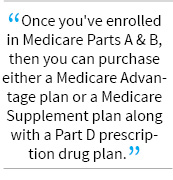Your Insurance … with Michele Campbell: Planning for retirement insurance is still needed dur-ing shelter in place
People older than 65 are deciding not to go back to the workplace and retire instead

Michele Campbell
Despite a pandemic ravaging the globe, there are still things we need to plan for. Locally, some residents are retiring and are new to Medicare, and we are here on the phone and virtually to help get you prepared for the next stage of life.
Are you turning 65 or just now retiring? You’ve come to the right place. Even during this “Shelter in Place” period, we’re still working diligently with folks who are coming into the Medicare system.
Many folks who are older than 65 are deciding not to go back to the workplace and retire instead. If this is your case, don’t wait to learn about Medicare, do your research early and be prepared. You might be feeling a little overwhelmed with all the information out there, so here’s a brief breakdown to help.
Original Medicare = Part A & B
These are the only parts that are provided by the government. If you’ve worked your 40 quarters, which equals 10 years, then Part A should be free. Part B has a standard rate or $144.60, but can be higher based on your income. You can check what your Part B premium will be on Medicare.gov. Once you know this number, you will get a better idea of what your costs are for retirement planning.
Many people are surprised about this cost and haven’t planned well enough. Once you’ve enrolled in Medicare Parts A & B, then you can purchase either a Medicare Advantage plan or a Medicare Supplement plan along with a Part D prescription drug plan.
Part C is a Medicare Advantage plan
 Typically, these are HMO plans and the more rural you are, the less available these are. These plans are considered Managed Care, where you pick a Primary Care Physician, who belongs to a network or two.
Typically, these are HMO plans and the more rural you are, the less available these are. These plans are considered Managed Care, where you pick a Primary Care Physician, who belongs to a network or two.
Once you’ve picked your doctor and start using the plan, you have to get referrals to see specialists. If you choose to go out of network, then you won’t have any coverage with the HMO’s.
With Medicare Advantage plans, you have deductibles and copays as you use the plan. Sometimes there are no copays, such as for preventative services, you don’t pay anything. For bigger ticket items, like inpatient hospital, outpatient surgery, MRI’s, etc., you typically have larger copays.
For smaller cost items, like X-rays and lab work, they can be at no cost or small copays. Most Advantage plans include a Part D drug plan, so you’ll satisfy that portion that Medicare requires that you have.
Medicare Supplements are not HMO or PPO plans
Supplements are secondary to Medicare. The Supplement can pay your deductibles and coinsurance that Medicare doesn’t pay. There are various plans but the most popular plans are Plan F, G and N. These plans do not cover medication you pick up at the pharmacy, so you’ll need to add a Part D drug plan also. There is a lot more detail that goes into these plans, but this is a good start to compare the differences.
Medicare 101 Webinars are coming. We will be scheduling these soon, so give us a call or stop by our website for further details (mcInsuranceServices.com).
- Your Medicare … with Michele Campbell: It’s important to understand the details of Medicare enrollment periods - August 9, 2023
- Your Insurance … with Michele Campbell: Are you retiring or new to Medicare? - December 14, 2022
- Your Medicare … with Michele Campbell: Open enrollment is coming soon - September 23, 2022
